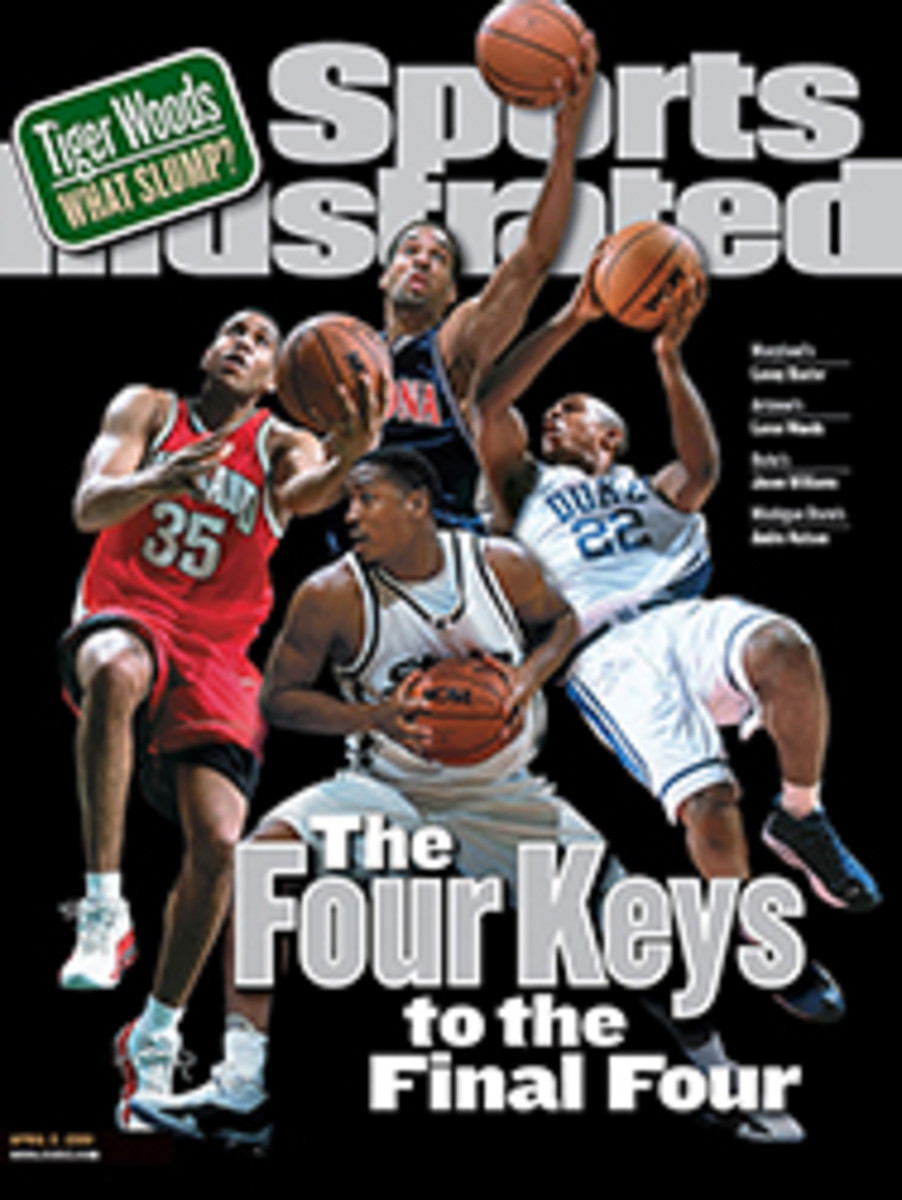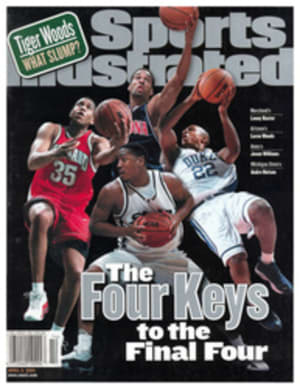
Battle Plan The author reveals the hole-by-hole approach he used to win at Augusta National 25 years ago and how players attack the course today
Augusta National Golf Club is a masterpiece. The course design by
Bobby Jones and Alister MacKenzie is so grounded in classic
principles and so well conceived that it has withstood the
evolution of the game and remains a tremendous challenge. But
that's not to say that the course doesn't play differently than
it did 25 years ago when I won the Masters. The greens have been
changed from bermuda to bentgrass, many tees have been pushed
back, some bunkers and trees have been added, and recently the
fairways were lined with light rough.
Today the greens are much faster, and the course has become
tighter, especially for the shorter hitters, who can't carry the
fairway bunkers. The rough makes it more difficult to stop the
ball on the greens, although it also keeps balls from running
into trouble as easily as they did in the past.
Even though the fairways are wide and the greens are huge, the
actual targets at Augusta National are very small. The course
presents a golfer with the kind of shots that, after you hit one
of them, make you want to wipe your brow and say, "Whew, that was
hard!" While the National rewards power, it just as often
punishes aggression. You have to stay out of the water, and even
the best short-game player won't save par from the wrong side of
the green. There are a lot of so-called birdie holes, but a
triple bogey can jump up and grab you in a heartbeat. The smart
player has the patience to accept that par is a good score on
almost every hole.
Let me show you how I tried to play Augusta National in 1976 and
how this year's Masters winner will probably play the course.
Then and Now
In 1976 I played to the red-shaded areas at Augusta National.
Today most players go for the blue-shaded spots. I've also
indicated the best places to miss a shot and the worst.
1
Par-4
410 Yards
A tight driving hole for those who can't carry the fairway
bunker, and few could in 1976. Those who can will hit a short
iron in--but beware of missing left or long.
2
Par-5
575 Yards
This hole has been lengthened by more than 30 yards, so today's
drives are stopping in about the same place as ours did. The
trees on the left are death. Back in '76 we tried to run the
second shot through the front bunkers and didn't mind going in
them. Today's players can fly the ball onto the green.
3
Par-4
350 Yards
One of the great short par-4s in golf. Because it's so hard to
hold the green, it's best to lay-up short of the fairway bunkers
and hit an eight-iron in. When the pin is back, though, blasting
a driver just short of the green isn't a bad play for the long
hitters.
4
205 Yards
I've always aimed at the middle of the green, and so do today's
players. The gusting wind makes club selection very difficult.
5
Par-4
435 Yards
This hole used to be a long, difficult par-4, but today players
routinely cut the dogleg with a driver and hit as little as a
wedge in. In my day it required a long iron to a small green
full of knobs, a shot we often tried to run up.
6
Par-3
180 Yards
This diabolical hole hasn't changed, except now players
hit eight-irons instead of six-irons. The hole might even be
easier because the rough keeps a ball short and right of the
green from rolling into the pine straw. You must get the ball on
the top shelf when the pin is back there.
7
Par-4
365 Yards
I always hit a driver or a three-wood to leave myself a
120-yard approach. Today's players can get that by hitting a
two- or a three-iron. For a long hitter the fairway actually
opens up, but getting within 100 yards leaves a short wedge
shot, usually downwind, to an ultrafirm green.
8
Par-5
550 Yards
In '76 I could get home in two with a favorable wind, but it
took my best drive and three-wood. Even though the hole is now
20 yards longer, the big hitters are flying the fairway bunker
and reaching the green with as little as a five-iron.
9
Par-4
430 Yards
We used to hug the left side off the tee, but the new rough
makes that a bad play. Now the line for big hitters is way out
to the right. Even though this is probably the fastest green on
the course, back to front, the approach has to err on the long
side or the ball will roll back to you in the fairway.
10
Par-4
485 Yards
This hole always required a draw off the tee, but now, with the
tee moved back and left, it requires an even bigger one. Long
knockers have the advantage of hitting a straight ball and
letting the slope kick the ball to the left. There's no rough to
the left of the green to keep a ball from rolling into
bogey-or-worse territory.
11
Par-4
455 Yards
The power hitters of today play a much easier hole than we did.
We used to hit long irons in, which made the pond very scary.
Hogan said if he was on in 2, he had pulled his second shot. Now
players even fire at the back-
left pin.
12
Par-3
155 Yards
A brilliant hole that will absolutely break your heart. The wind
goes through it in a circle, which means you can hit a great
shot and it might drop into the water short of the green or
disappear on the hill behind it. The smart play is to the middle
of the green, because that gives you the most margin for error.
13
Par-5
485 Yards
The big hitters have almost outgrown the tee shot, so rather
than blow a driver into the pine straw on the right, they sling
a three-wood around the bend and hit a mid-iron or even a short
iron in. We never hit less than a five-iron. The sidehill lie
makes you think you're going to pull the shot, but if you
overcorrect, you're wet. The shot is still one of the greatest
in golf.
14
Par-4
405 Yards
Because the tee has been moved back, it's easier to lose your
tee shot to the right. The huge hump in the front of the green
mandates that the second shot err on the long side and makes the
difference between a birdie and a bogey razor thin.
15
Par-5
500 Yards
A pure power hole. The year I won, I came in with five-woods and
three-irons, but now some guys can actually hit a wedge, and it
won't be too long before someone drives it into the water. The
downhill wedge from the layup area over the pond to an uphill
green is one of the scariest shots in the game.
16
Par-3
170 Yards
This hole hasn't changed much, except that players are hitting a
club or two less. I've always felt that the back-right pin, set
on a severe downslope, is unfair. The water left is dead, but
missing right into one of the bunkers leaves an almost
impossible up and down.
17
Par-4
425 Yards
What used to be the easiest hole on the course is now a wonderful
test. The rough and the new trees on the right have made the
driving area tight, and instead of hitting wedges to the green
the way players did a few years back, they are now forced to hit
mid-irons, just as I did. The second shot must land on the
correct side of the hump dividing the green.
18
Par-4
405 Yards
The fairway bunkers made it a tight hole in my day, but now the
long hitters blow right over them with a power fade and hit a
short iron in. The only trouble is the trees on the right, which
are easy to avoid since the hole is so wide open on the left.
Eighteen is still a good challenge for short hitters, but it has
become a very easy hole for long hitters like Tiger Woods.
Raymond Floyd has played in 36 Masters. In addition to his
victory in 1976, when he scored 271, equaling a tournament record
that stood until Tiger Woods shot 270 in 1997, he has finished
second three times. He has also won a U.S. Open and two PGAs, 18
other Tour events and 14 Senior tour titles. Floyd, 58, and Sam
Snead are the only players to win a Tour event in each of four
decades.
COLOR PHOTO: ROBERT BECK
EIGHTEEN COLOR ILLUSTRATIONS: ILLUSTRATIONS BY GIACOMO MARCHESI. HOLES ARE NOT TO SCALE, AND THE COURSE ROUTING IS AN APPROXIMATION.

